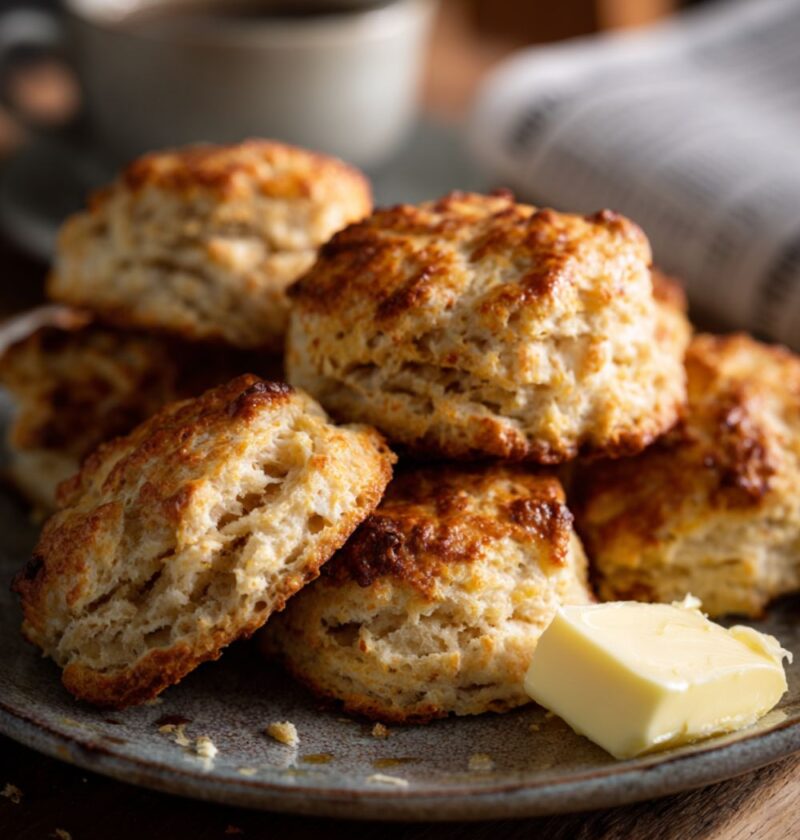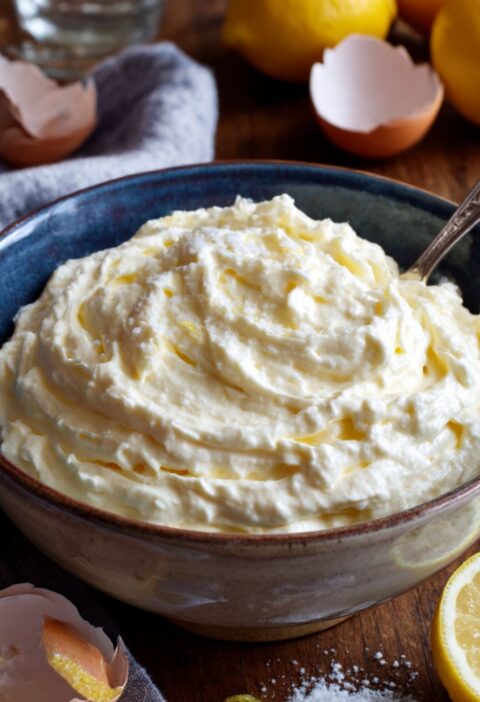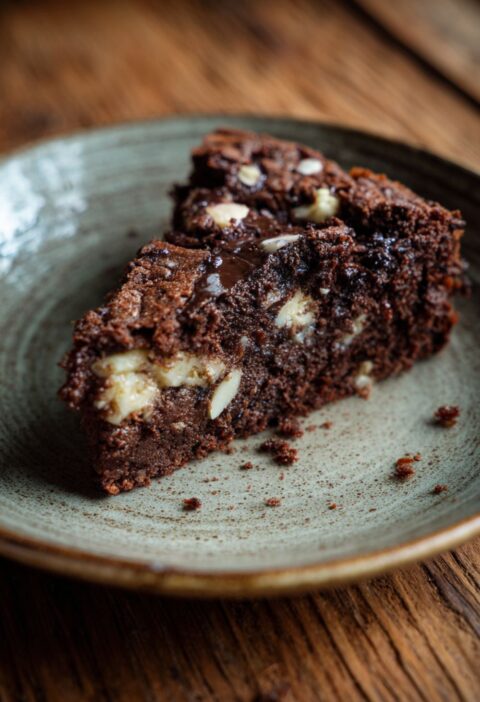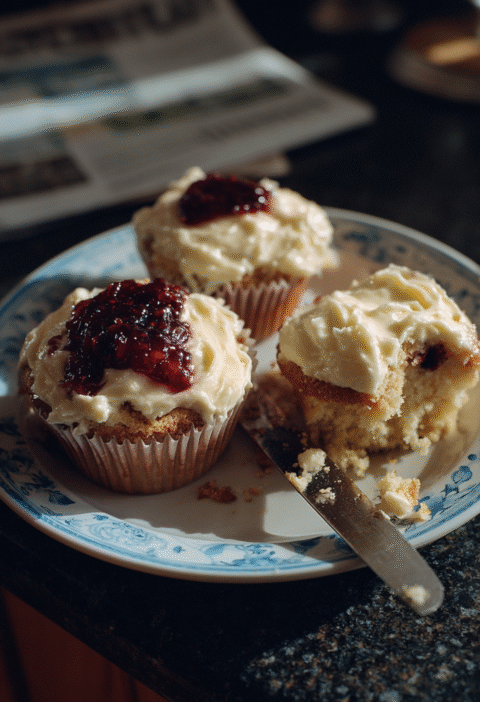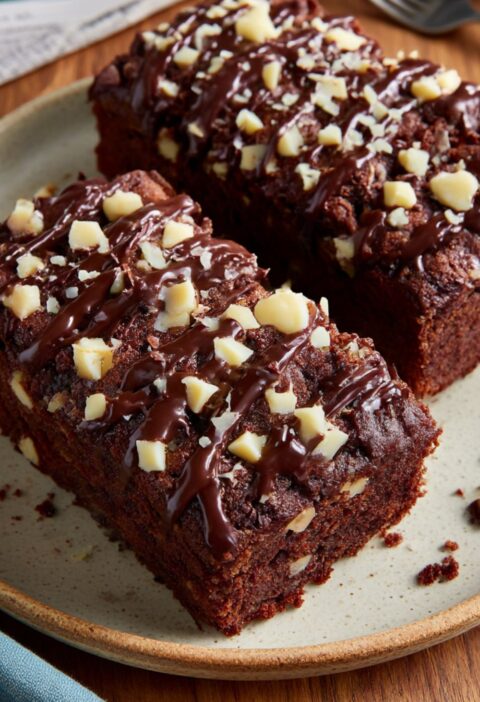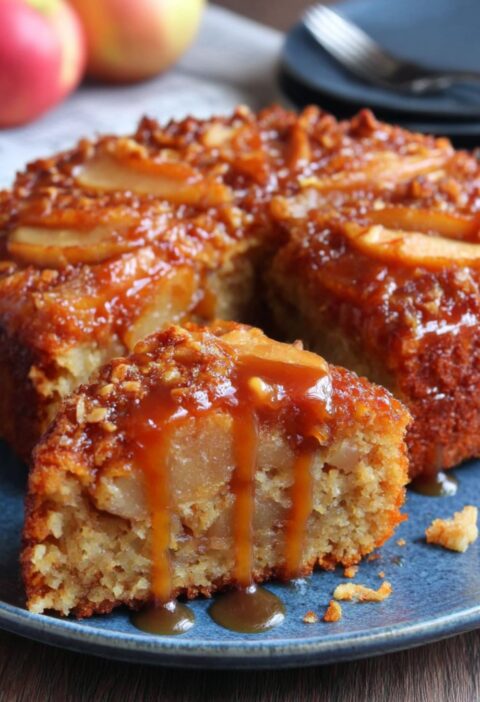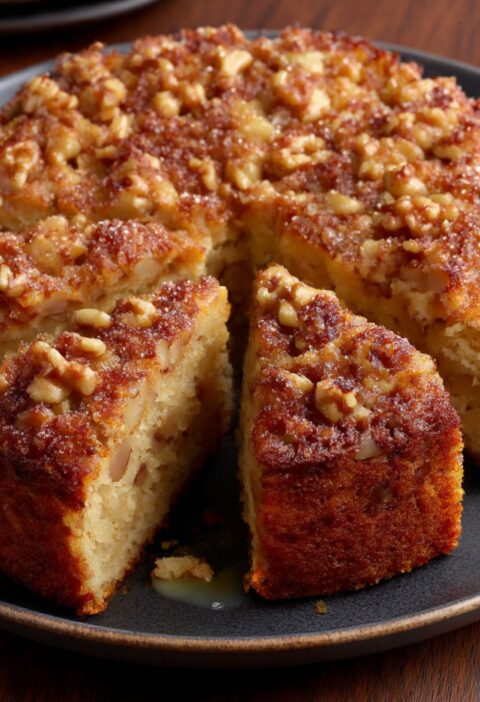This Mary Berry Buttermilk Scones Recipe is a tender and fluffy recipe, which is made with buttermilk and self-raising flour. It’s a classic, foolproof recipe, ready in about 25 minutes.
Mary Berry Buttermilk Scones Ingredients
- 450g (1lb) self-raising flour
- 2 tsp baking powder
- 75g (3oz) butter, cold and cubed
- 50g (2oz) caster sugar
- 2 large eggs
- 284ml (1 carton) buttermilk
How To Make Mary Berry Buttermilk Scones
- Preheat and prepare: Preheat the oven to 220°C/200°C Fan/Gas 7. Line a large baking sheet with baking parchment.
- Combine dry ingredients: In a large bowl, measure the flour and baking powder. Add the cold, cubed butter.
- Rub in the butter: Using your fingertips, rub the butter into the flour until the mixture resembles fine breadcrumbs. Stir in the caster sugar.
- Mix wet ingredients: In a jug, beat the eggs and buttermilk together. Reserve about 1 tablespoon of the mixture for glazing the scones later.
- Form the dough: Pour the rest of the egg and buttermilk mixture into the dry ingredients. Use a knife to combine everything into a soft, fairly moist dough.
- Shape the scones: Turn the dough out onto a lightly floured surface. Knead very gently and briefly until smooth. Pat or lightly roll the dough to a thickness of about 2.5cm (1 inch).
- Cut and place: Use a 6cm (2½ inch) fluted cutter to stamp out as many scones as you can. Place them on the prepared baking sheet, close together to help them rise evenly.
- Glaze and bake: Brush the tops of the scones with the reserved egg and buttermilk mixture. Bake for 12-15 minutes, or until well-risen and a pale golden-brown. Cool on a wire rack.
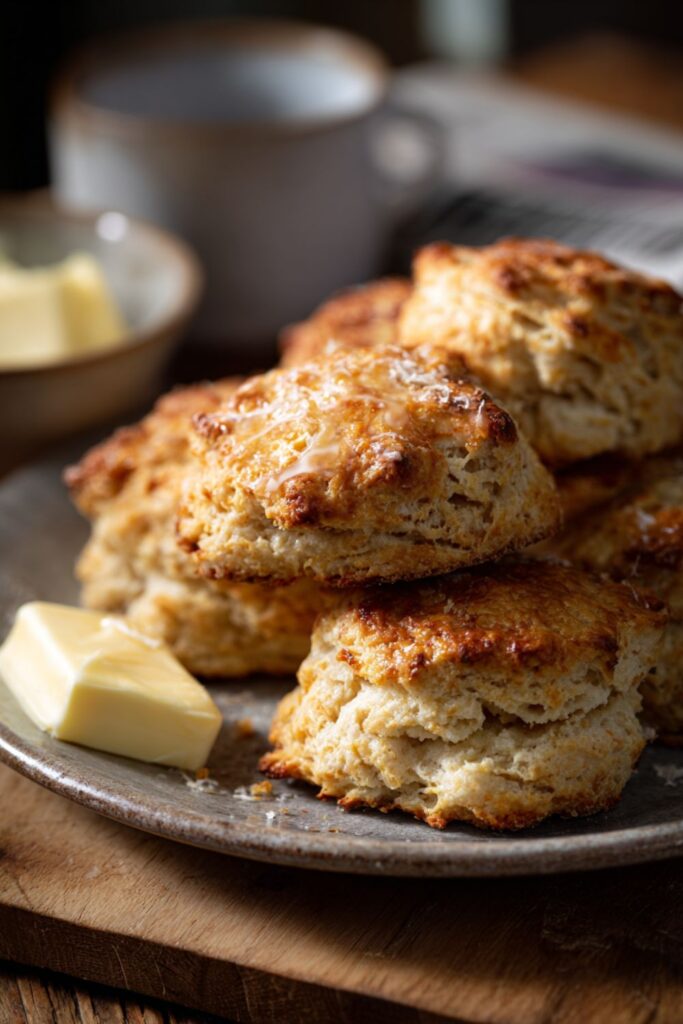
Recipe Tips
- Why use buttermilk in scones? Buttermilk is slightly acidic, which reacts with the baking powder to create extra lift. This reaction results in scones that are exceptionally tender, moist, and fluffy.
- How do I get the best rise? For tall scones, don’t roll the dough too thin—aim for about 1 inch thick. When you cut the scones, press the cutter straight down and pull it up without twisting. Twisting seals the edges and prevents a straight, even rise.
- What if I don’t have buttermilk? You can make a quick substitute. For every 250ml of milk, stir in 1 tablespoon of lemon juice or white vinegar. Let it stand for 5-10 minutes until it thickens slightly, then use it as you would buttermilk.
- Should the dough be sticky? The dough should be soft and slightly moist, but not overly sticky. If it’s too difficult to handle, add a light dusting of flour, but be careful not to add too much, as this can make the scones dry.
What To Serve With Buttermilk Scones
Buttermilk scones are the perfect canvas for classic afternoon tea toppings. They are best served warm with:
- A generous dollop of clotted cream
- Your favorite fruit jam, such as strawberry or raspberry
- A simple spread of salted butter
How To Store Buttermilk Scones
Room Temperature: Scones are always best on the day they are made. Store any cooled leftovers in an airtight container for up to 2 days. Freeze: To freeze, allow the baked scones to cool completely. Wrap them well and freeze for up to 3 months. Thaw at room temperature or warm them gently in the oven directly from frozen.
Buttermilk Scones Nutrition Facts
- Calories: approx. 210 kcal per scone
- Carbohydrates: 35g
- Protein: 6g
- Fat: 5g
- Saturated Fat: 3g
- Sodium: 300mg
Nutrition information is estimated and may vary based on ingredients and cooking methods used.
FAQs
Absolutely. You can stir in about 100g of sultanas or other dried fruit along with the sugar. Tossing the fruit in a little flour first will help prevent it from sinking to the bottom of the scones.
This is usually caused by overworking the dough. When you knead or mix the dough too much, it develops gluten, which makes the scones tough. Handle the dough as little as possible, mixing only until it just comes together.
It’s best to bake scones fresh. However, you can prepare the dough, cut out the scones, and place them on a baking sheet. Cover and refrigerate for a few hours before baking. You may need to add a minute or two to the baking time.
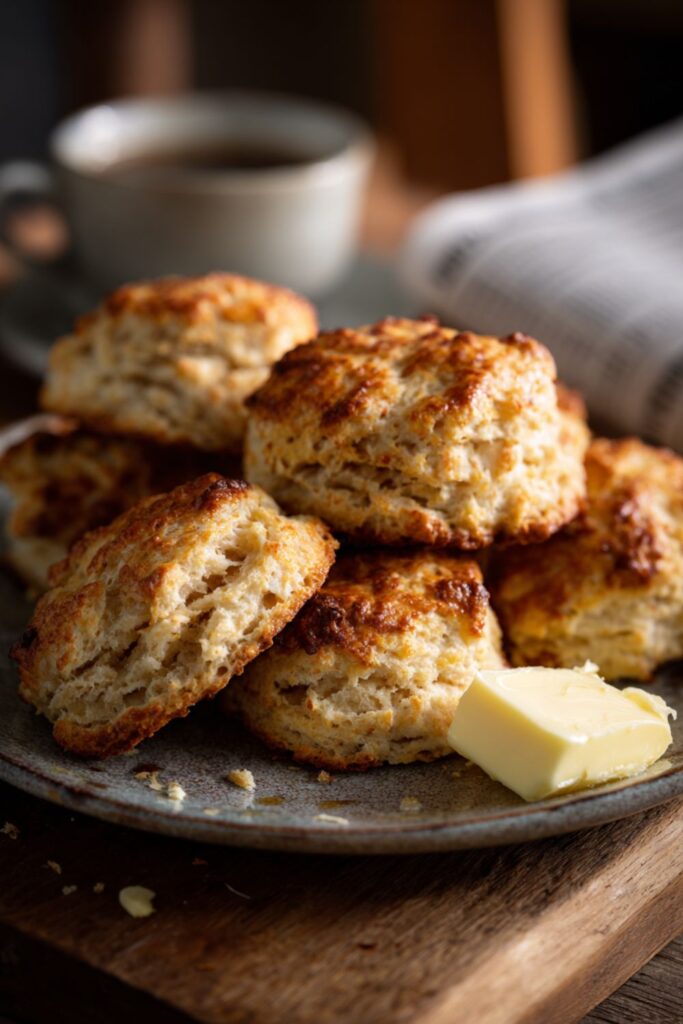
Mary Berry Buttermilk Scones Recipe
Description
A classic recipe for incredibly tender, light, and fluffy buttermilk scones with a subtle tang, perfect for a traditional cream tea.
Ingredients
Instructions
- Preheat oven to 220°C/200°C Fan and line a baking sheet.
- Combine flour and baking powder, then rub in cold butter until it resembles breadcrumbs.
- Stir in the sugar. In a jug, beat the eggs and buttermilk together.
- Add most of the wet mixture to the dry, mixing gently to form a soft, moist dough.
- On a floured surface, pat the dough to 2.5cm (1 inch) thick. Cut rounds with a 6cm cutter.
- Place on the baking sheet, brush tops with the reserved egg/buttermilk mixture.
- Bake for 12-15 minutes until risen and golden.
Notes
- For the fluffiest texture, handle the dough as little as possible. Do not over-knead.
- Using cold butter and cold buttermilk is key to creating a light, flaky scone.
- When cutting, press the cutter straight down without twisting to ensure the scones rise evenly.
- Placing the scones close together on the baking sheet helps them to rise upwards rather than spread outwards.
